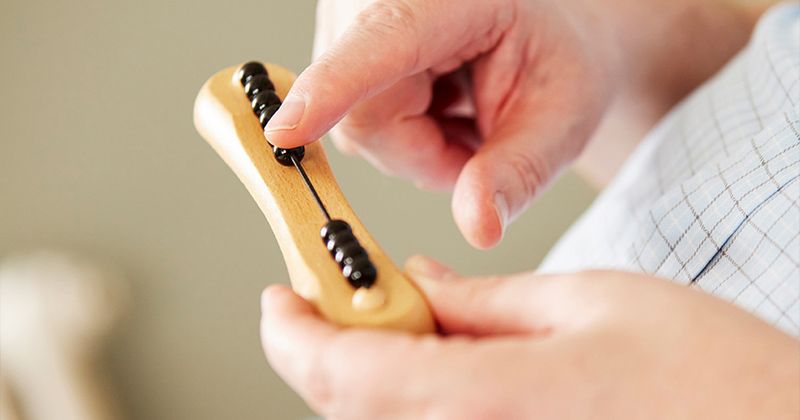Hydration is crucial year-round, particularly for older adults and those with cognitive impairments. This article offers strategies to keep your loved ones hydrated, including providing dive...

Gentle Tips for Bathing, Grooming, and Dressing Someone Living with Dementia
by Valerie Larochelle, CEO and Co-founder of Eugeria
5-minute read
Bathing, grooming, and dressing are everyday activities for most of us — routines we barely think about. But for someone living with dementia, these familiar moments can change in surprising ways. Memory loss, changes in the senses, and shifts in how the brain processes information can make these tasks feel new, unfamiliar, or even overwhelming.
For caregivers, understanding how these activities might feel from the other person’s perspective can be a game-changer. It helps you approach them with patience, adapt your methods, and protect their comfort and dignity. These moments are about much more than getting ready for the day — they’re opportunities to connect, offer reassurance, and help them feel like themselves.
Bathing: A New Sensory Experience
For someone living with dementia, stepping into the bathroom can feel like entering an unfamiliar space. The sudden changes in lighting or room temperature can catch them off guard. The echo of running water might sound louder than before. The sensation of water on skin can be unexpected and even warm water can feel cold. Add in the mix of smells and tasks that feel unfamiliar, and it’s easy to see how bathing might feel overwhelming. In addition, being undressed, especially in a setting that doesn’t feel familiar, can bring on feelings of vulnerability or embarrassment.When you understand this, it becomes less about getting the bath “done” and more about creating a calm, predictable experience. That might mean explaining each step before it happens, keeping them covered for privacy, or slowing things down so they can adjust to each sensation.
Tips for a gentler bathing experience:
- Warm the bathroom ahead of time, and make sure the lighting is soft but bright enough for safety.
- Explain each step before you do it, using short, reassuring sentences.
- Offer small choices, like which soap to use or whether to wash hair today.
- Using a shower garment like the Blue Hug can help them stay covered while bathing, to make them feel safer.
- Move at their pace, pausing if they seem unsure or uncomfortable.
- Pair the bath with something soothing, like soft music or a warm towel at the end.
Grooming: Familiar Routines, New Challenges
Brushing hair, shaving, or clipping nails might seem simple, but for someone living with dementia, they can feel unfamiliar or even unsettling. Holding small tools may be harder if grip or coordination has changed. Sharp or metallic objects can look and feel unsafe. The order of steps, like brushing hair before styling or rinsing before spitting when brushing teeth, may not come as naturally as before. And mirrors can sometimes be disorienting if they don’t immediately recognize their own reflection.
The key is to make grooming feel predictable and pleasant. Using familiar products, like the same shampoo or lotion they’ve always liked, can help. If holding tools is difficult, adapted options can make a big difference and allow them to participate.
Tips for a calmer grooming routine:
- Choose products with familiar scents to bring a sense of comfort and routine.
- Use adapted tools, like the Easi-Grip Nailcare Set, to encourage participation and make it easier and safer for them.
- Demonstrate on yourself before helping them, so they can see what to expect.Invite them to start the process.
- For example, handing them the comb before you help.
- Keep grooming tasks at the same time each day so they become part of a familiar rhythm.
- If mirrors are unsettling, try doing grooming tasks in a well-lit area without one.
Dressing: Preserving Identity and Comfort
Dressing is about more than getting clothed, it’s a way to express personality and identity. For someone living with dementia, this process can feel confusing. Remembering the order of garments might be tricky, and fastenings like zippers or buttons can be frustrating. Certain fabrics might suddenly feel uncomfortable against the skin. And for many, the way they look, the colors they wear, whether things “match”, still matters deeply.
When you help someone get dressed, you’re not just supporting a practical need, you’re helping them feel like themselves. That might mean honoring a lifelong preference for certain color combinations, or choosing clothing that reflects their personal style while making it easier to put on.
Tips for making dressing easier and more personal:
- Choose clothing that’s comfortable and easy to manage, like elastic waistbands or Velcro fastenings.
- Lay out clothes in the order they’ll be worn, to make the process feel straightforward.
- Ask what they’d like to wear, sometimes matching colors or choosing a favorite sweater makes all the difference.
- Offer one item at a time to avoid overwhelming them with too many choices.
- Allow extra time and avoid rushing, so they can participate at their own pace.
- If buttons or zippers are frustrating, consider adaptive clothing options.
Final Encouragement
Helping someone bathe, groom, or get dressed can be one of the most personal and sometimes challenging parts of caregiving. But when you understand how dementia changes the experience of these routines, you can adapt in ways that make them calmer, more predictable, and more respectful.
Some days will feel easier than others, and that’s okay. On the hard days, remember that every moment of patience, every small act of kindness, and every effort to protect dignity matters. These aren’t just tasks, they’re acts of care, connection, and love. And in helping them feel safe and seen, you’re doing something deeply meaningful.



